Spotted Crake Porzana porzana
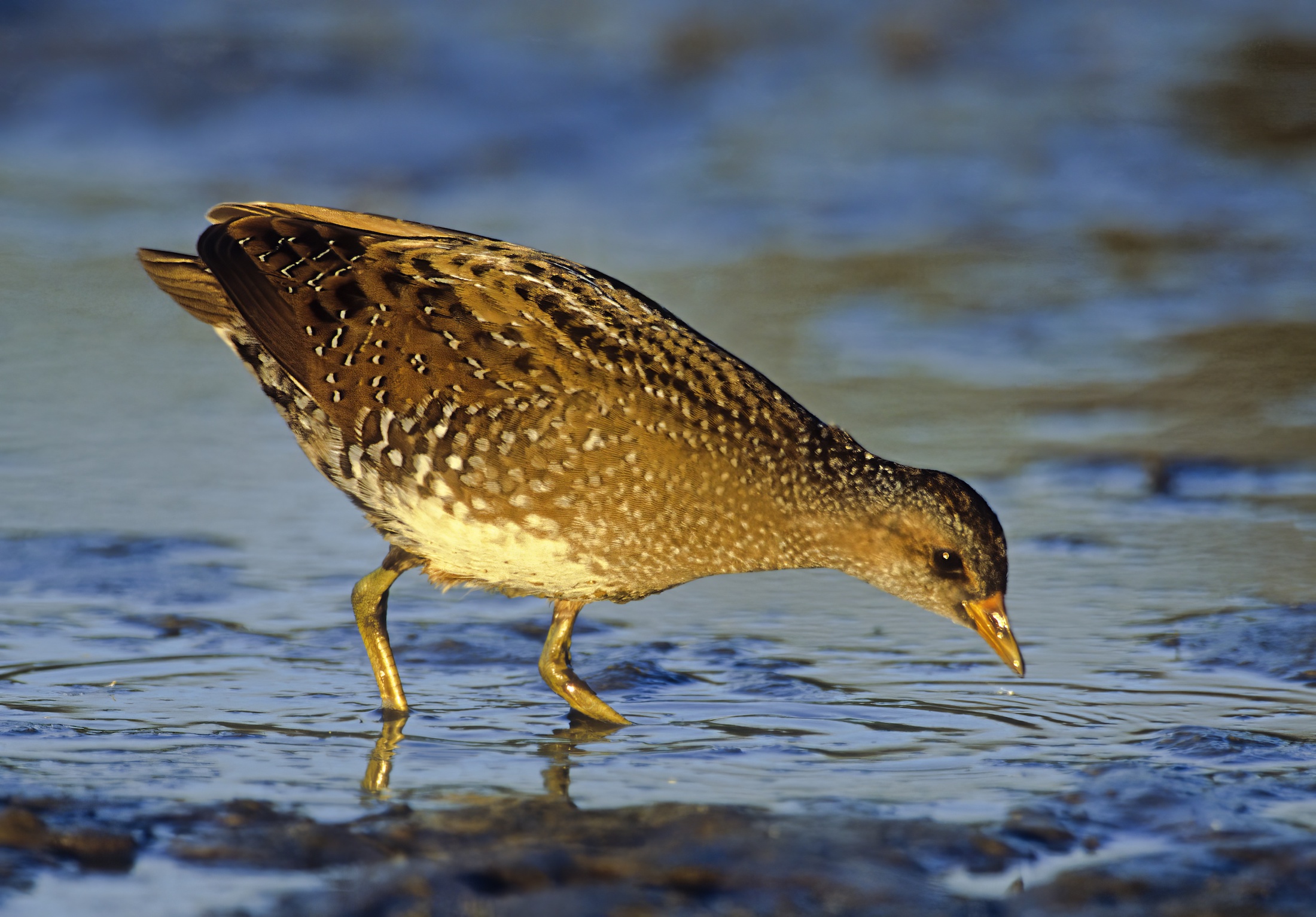
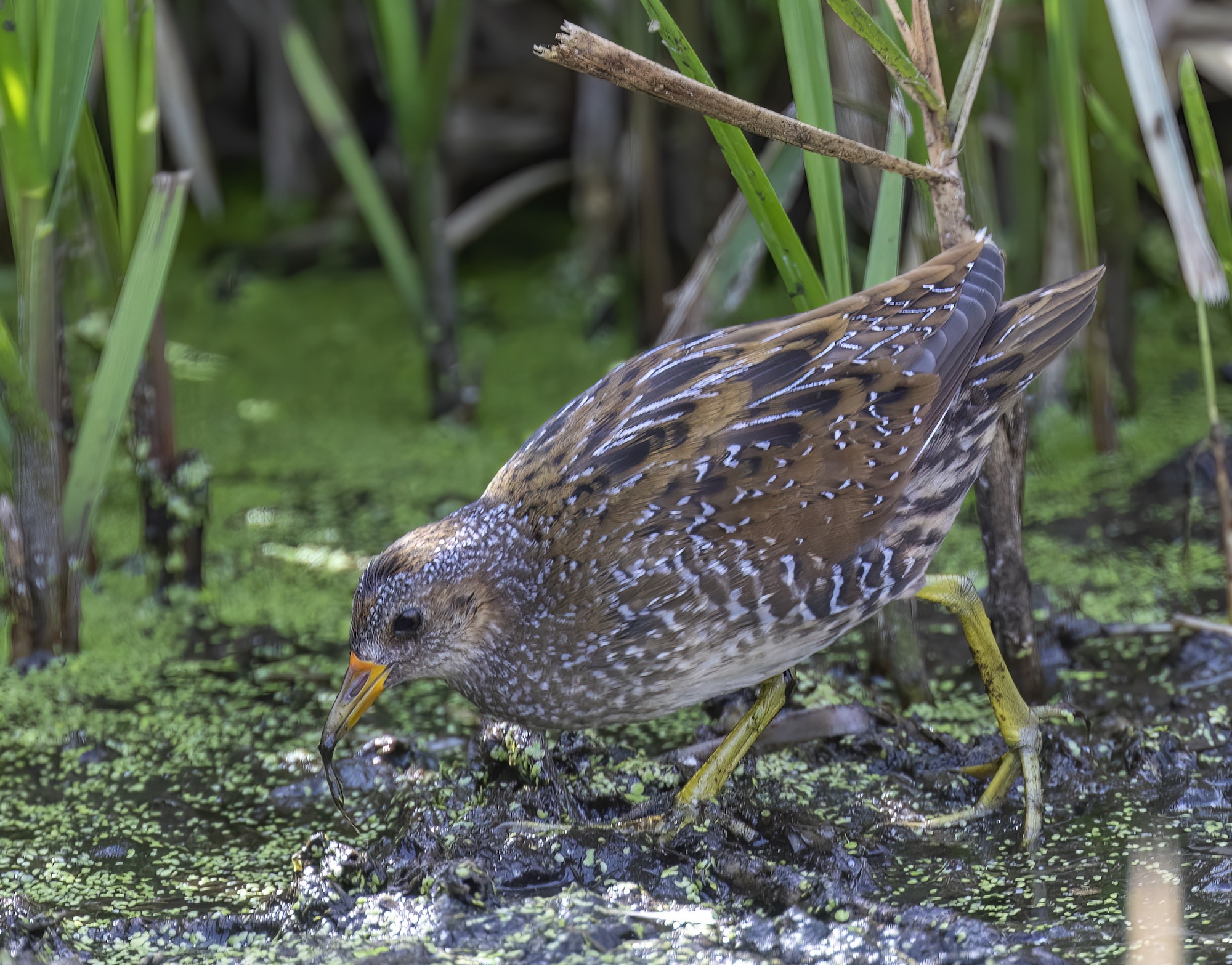
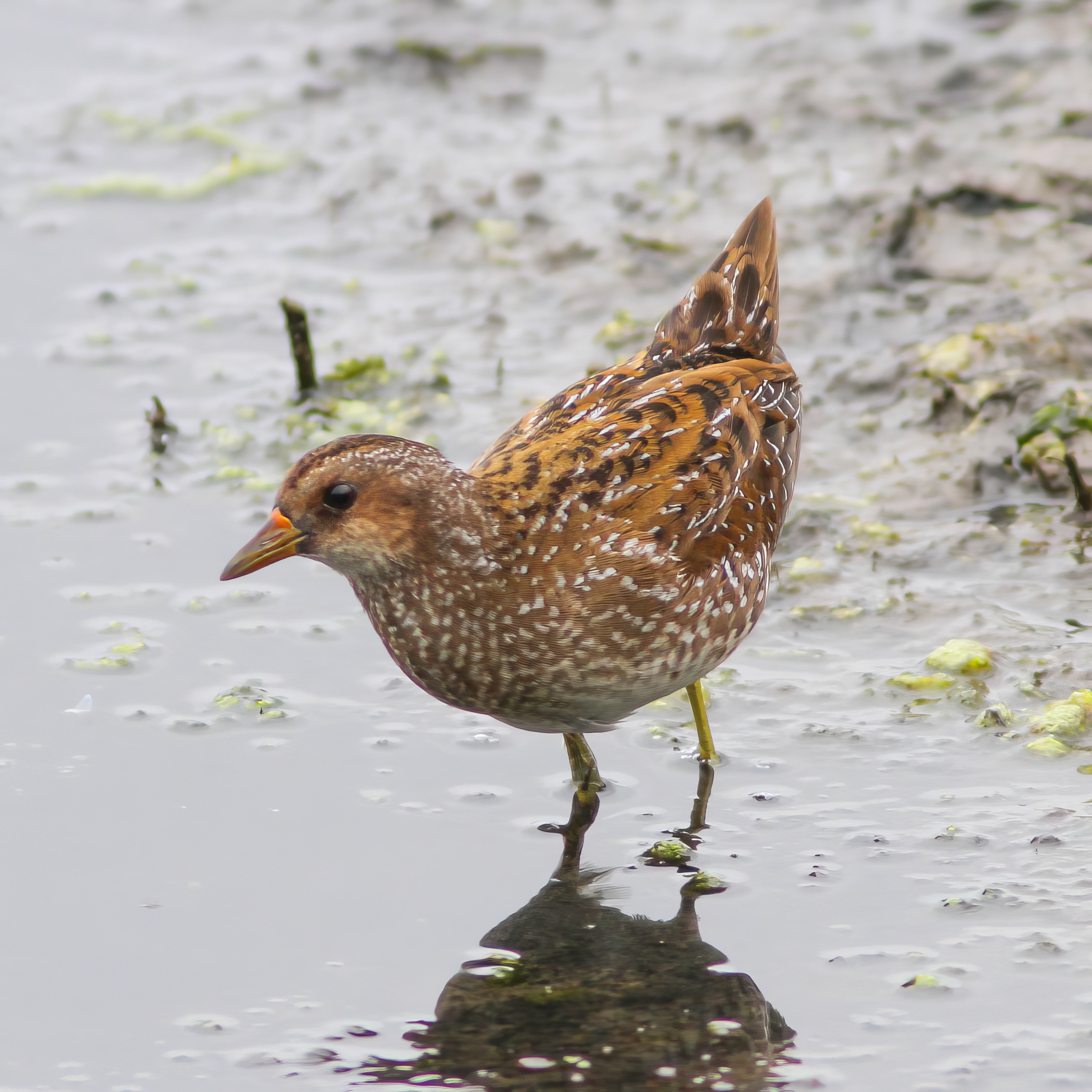
Very few were encountered from 1930 onwards – L&A knew of only four records during 1930-1952 – but from the 1960s, more Spotted Crakes were recorded. The bulge in frequency during the late 1960s and through the 1970s (see first chart) is due in part to the 12 birds recorded at Wisbech sewage farm between 1966 and 1978 though it is also associated with winter records (see below). Generally, no more than one or two are found each year, and the annual average for the past forty years has remained fairly constant, at about 0.8 birds per year. Most records are of single birds but two together were at Wisbech during August 17th-31st 1968 and on September 20th 1978. The total of 53 during 1952-2016 includes three that were found dead.
The second chart shows that the species is recorded especially as an autumn migrant, with smaller numbers in spring and a somewhat surprising numbers of winter records. However, although there have been eight birds during December-March, none has occurred in those months since 1978. Only four have been found between mid-April and late July, and two of these were singing males, in a secluded pond at Laughton Forest in June 2006 and at Baston Fen in April-May 2012. No other evidence suggestive of breeding has been noted since the early twentieth century. Many crakes are seen briefly and vanish, never to be seen again, but about one quarter of the total have been recorded over a week or more. The Baston Fen singing male appears to be the longest-recorded individual.
Spotted Crakes have been found at sites spread across the county. In contrast to many scarce species, less than 50% (23 of the 53 birds) have been along the coast, and quite a few have been well inland. However, the highest site totals, in addition to those at Wisbech, are at well-watched coastal sites: five at Donna Nook and nine at Gibraltar Point.
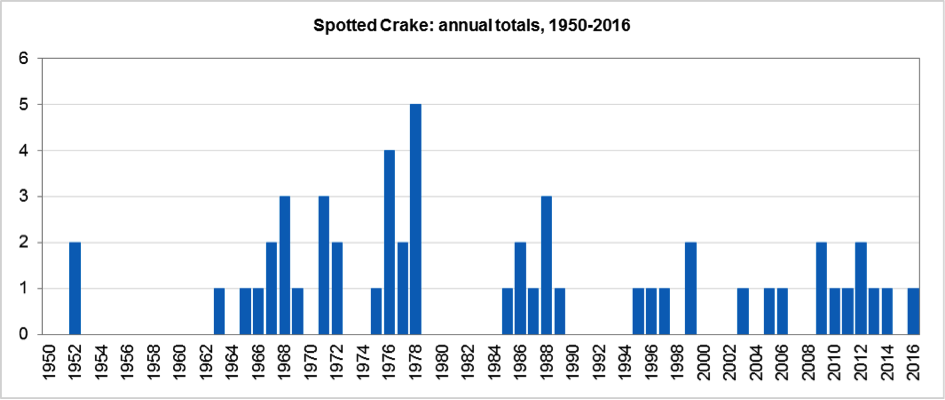
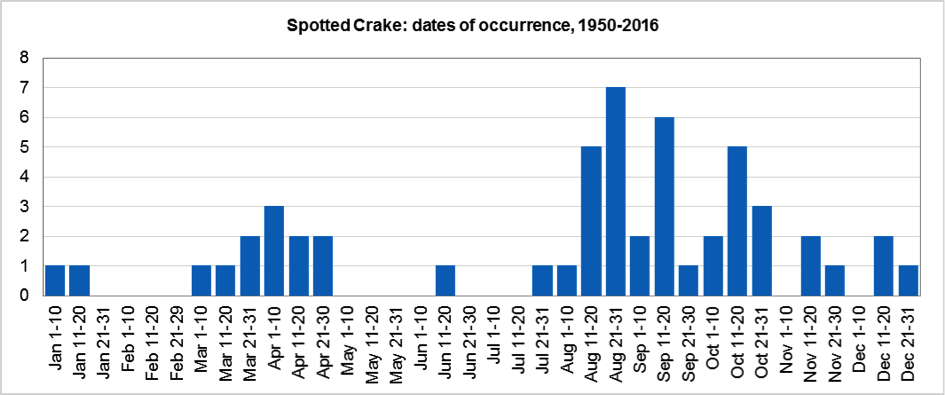
(Account prepared October 2017; updated with reference to the new Birds of Lincolnshire (2021) October 2022)

